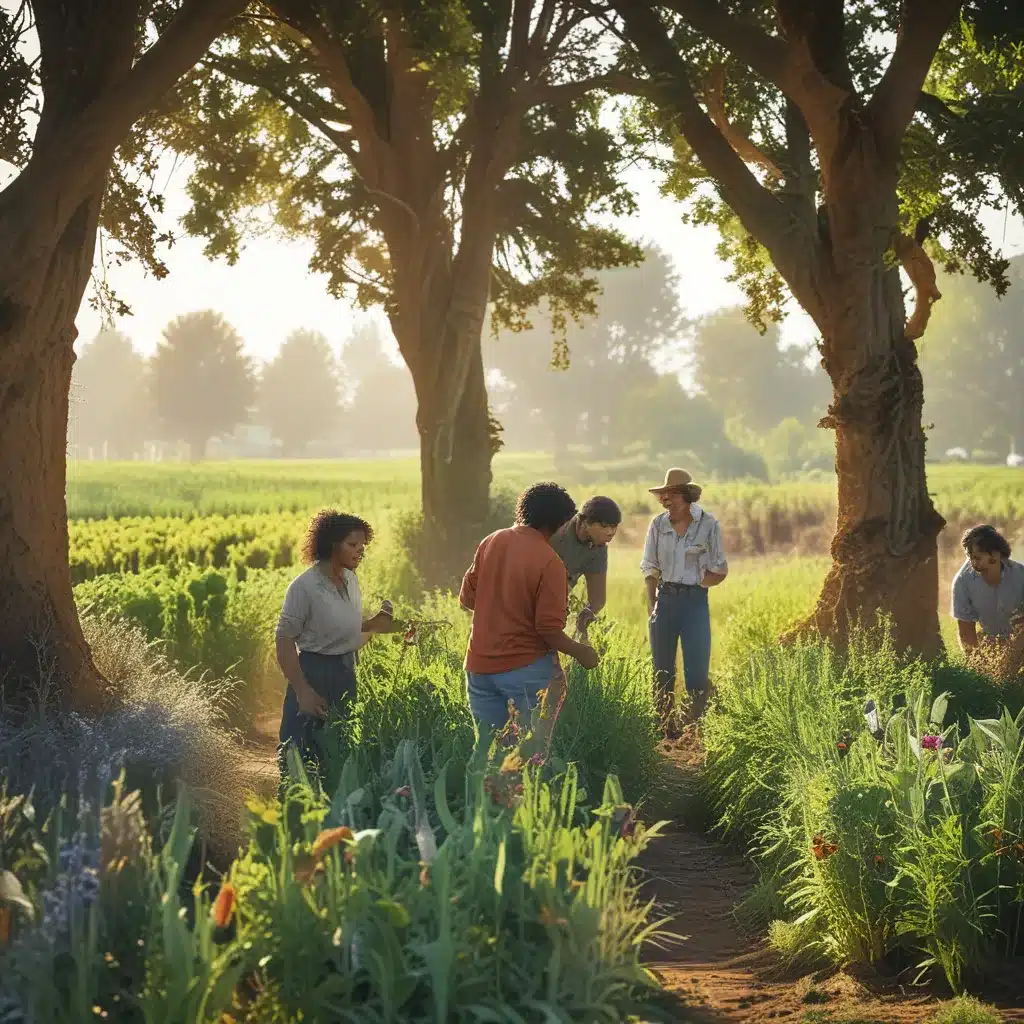
Harnessing the Power of Diversity: Intercropping for Organic Success
As I stroll through the vibrant rows of our Thornappple CSA farm, I’m struck by the sheer abundance and diversity that surrounds me. Leafy greens, plump tomatoes, and lush herbs all thrive in perfect harmony, each playing a vital role in the intricate dance of our organic ecosystem. This harmonious coexistence, I’ve come to learn, is the result of a farming practice called intercropping – and it’s the secret to our success.
Unlocking the Potential of Intercropping
Intercropping is the art of planting multiple crops in close proximity, allowing them to interact and support one another in remarkable ways. It’s a practice that I’ve come to embrace wholeheartedly, as it not only enhances the productivity of our farm but also helps us minimize our reliance on harmful chemicals and external inputs.
One of the key benefits of intercropping, as I’ve discovered, is its ability to control pest infestations. By strategically placing certain crops near others, we can create a natural deterrent system that keeps the pesky critters at bay. As Gemelle Brion explains, intercropping can involve using “trap crops” that are more attractive to the pests, drawing them away from our primary crops, or “repellent intercrops” that mask the scent of our produce, making it less appealing to the invaders. It’s a brilliant example of harnessing the power of nature to our advantage.
Cultivating a Thriving Ecosystem
But the benefits of intercropping don’t stop there. As Kadambot H.M. Siddique, the Hackett Professor of Agriculture at The UWA Institute of Agriculture, explains, this farming practice can also enhance the overall sustainability and productivity of our farm. By encouraging competitive and facilitative interactions between different plant species, we’re able to improve our crops’ nitrogen use efficiency and overall yields.
Imagine a symphony, where each instrument plays a unique role, yet together they create a harmonious and captivating melody. That’s how I envision our intercropping system – a delicate balance of diverse elements working in concert to create a thriving, self-sustaining ecosystem.
Harnessing the Power of Diversity
One of the most fascinating aspects of intercropping, in my experience, is the way it fosters biodiversity on our farm. By cultivating a mosaic of different crops, we’re inviting a wide range of beneficial insects, microorganisms, and other organisms to make their home with us. This not only helps to keep pests at bay but also enhances the overall health and resilience of our soil.
I’ll never forget the day I stumbled upon a patch of our farm where the soil was practically teeming with life. Earthworms burrowed through the rich, dark earth, while colonies of beneficial bacteria and fungi worked tirelessly to break down organic matter and make nutrients available to our plants. It was a humbling reminder that the true power of our farm lies not just in the crops we grow, but in the intricate web of life that supports them.
Putting Theory into Practice
Of course, implementing a successful intercropping system is no easy feat. It requires a deep understanding of plant physiology, soil dynamics, and the complex interactions between different organisms. That’s why I’m grateful for the wealth of knowledge available to us, thanks to the research being conducted at institutions like the University of Vermont and the University of Western Australia.
As the team at the University of California, Berkeley’s Center for Diversified Farming Systems has discovered, the timing and management of cover crops can have a significant impact on the success of our intercropping efforts. By carefully considering factors like decomposition rates and nutrient release, we can optimize our planting strategies to ensure that our crops thrive in harmony.
Embracing the Unexpected
One of the things I love most about intercropping is the sense of discovery and adventure it brings to our farming journey. Every season, we’re presented with new challenges and opportunities, and it’s up to us to adapt and find creative solutions.
Sometimes, the unexpected happens – a pest outbreak that we didn’t anticipate, or a crop that doesn’t perform as well as we’d hoped. But rather than seeing these as setbacks, I view them as opportunities to learn and grow. By closely observing the patterns and interactions within our intercropping system, we’re able to gain valuable insights that inform our future decisions.
A Delicate Dance of Diversity
As I reflect on our journey with intercropping, I’m struck by the sheer beauty and complexity of the system we’ve created. It’s a delicate dance of diversity, where each element plays a vital role in the overall harmony of our farm. And it’s a dance that I’m honored to be a part of, as we continue to push the boundaries of what’s possible in the realm of organic and sustainable agriculture.
So, if you’re looking to harness the power of diversity and unlock the secrets of organic success, I encourage you to embrace the art of intercropping. It may take some time and effort to get the hang of it, but trust me, the rewards are well worth it. After all, when you work in harmony with nature, the possibilities are truly endless.



